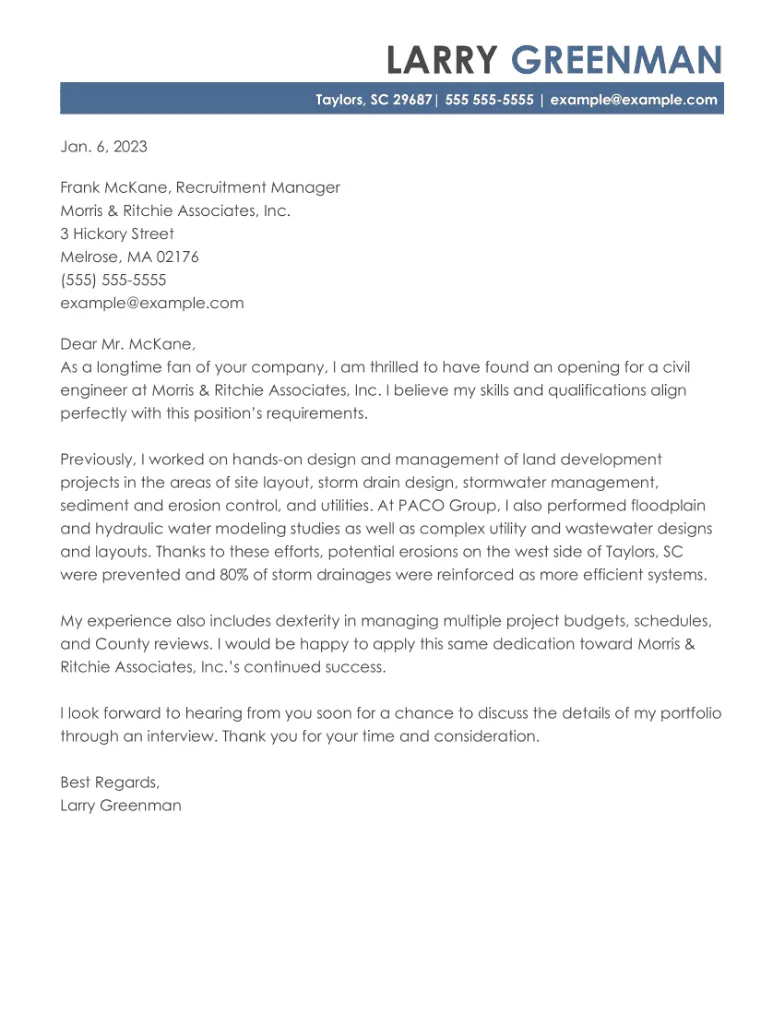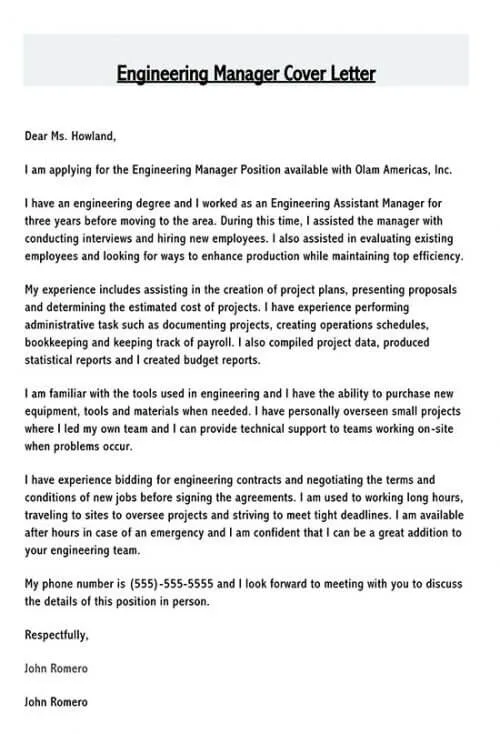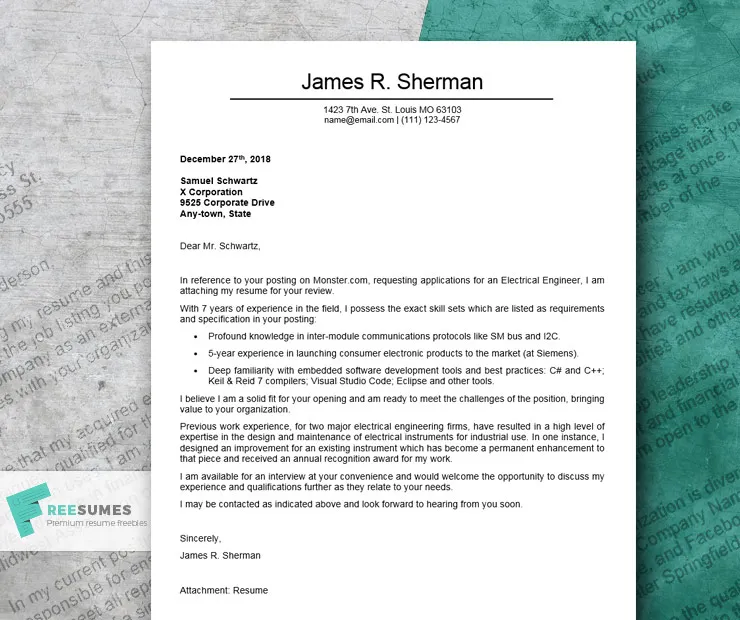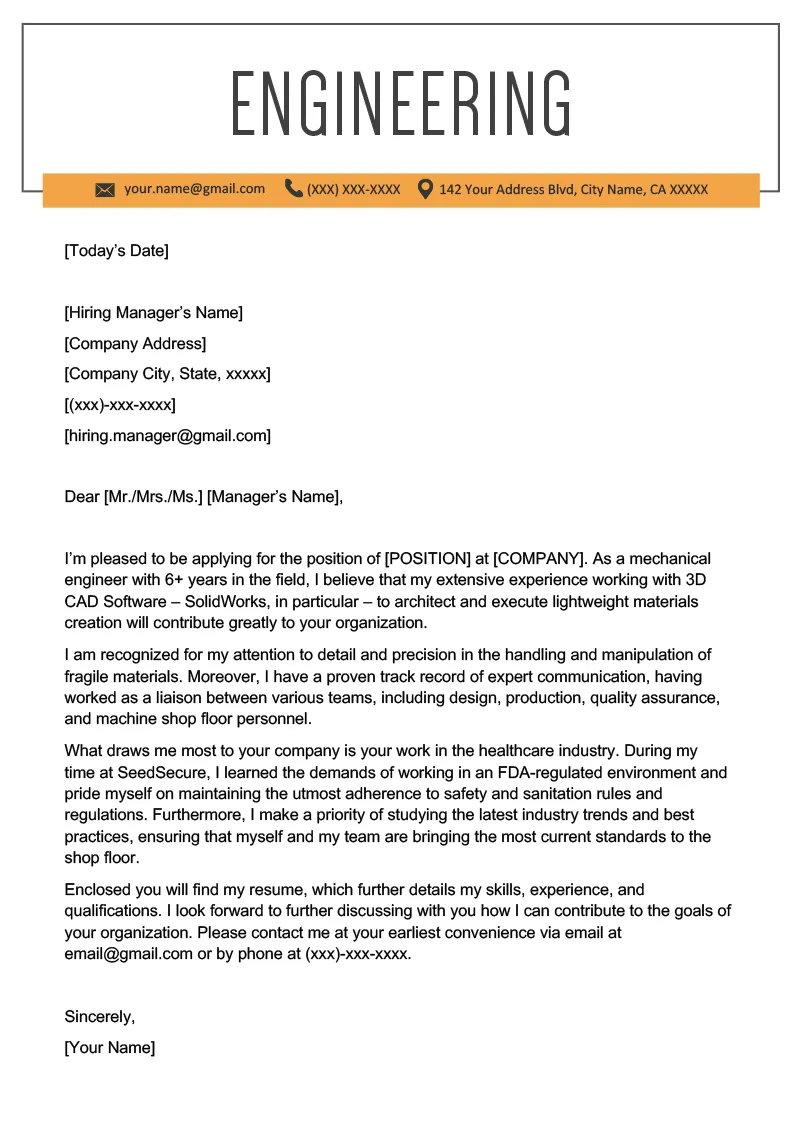What is an Engineering Cover Letter?
An engineering cover letter is a crucial document that accompanies your resume when applying for engineering positions. It serves as a personalized introduction, allowing you to highlight your skills, experiences, and qualifications in a way that a resume alone cannot. This letter provides an opportunity to showcase your personality, express your enthusiasm for the role, and demonstrate your understanding of the company and its needs. A well-crafted cover letter significantly increases your chances of getting noticed by hiring managers and securing an interview. It is your first impression; make it count by presenting yourself professionally and authentically.
Key Components of a Strong Cover Letter
A strong engineering cover letter is composed of several key components that work together to create a compelling narrative. First, clear and concise contact information including your name, phone number, email, and optionally, your LinkedIn profile. Then, the introduction should immediately capture the reader’s attention by stating the position you’re applying for and how you learned about it, showcasing your interest. The body paragraphs should highlight relevant skills and quantify achievements with data. These will demonstrate your capabilities. Your passion for engineering must shine through. Moreover, your cover letter should show your understanding of the company. Finally, a professional closing reaffirms your interest and invites further communication.
Contact Information and Introduction

Your contact information should be at the top of the cover letter, making it easy for the hiring manager to reach you. Include your full name, phone number, professional email address, and optionally, your LinkedIn profile URL. The introduction is your chance to grab the reader’s attention. Begin by stating the specific engineering position you are applying for and where you found the job posting (e.g., company website, LinkedIn, or a job board). Briefly express your enthusiasm for the role and the company. Mentioning a specific project or achievement that aligns with the job requirements can be a powerful way to immediately capture their interest and set the tone for the rest of the letter. Keep the introduction brief, focused, and enthusiastic.
Highlight Your Relevant Skills
One of the primary goals of your cover letter is to highlight your skills that are relevant to the engineering position. Carefully review the job description and identify the key skills the employer is seeking. Then, provide concrete examples of how you have used these skills in previous projects or experiences. Use action verbs to describe your accomplishments. For example, instead of saying you ‘worked on a project,’ you could say ‘designed and implemented a new system,’ showcasing your proactive and results-oriented approach. Tailor your examples to match the specific requirements of the job. This demonstrates that you understand the role and can quickly contribute to the team’s success. Focus on technical skills (e.g., CAD software, programming languages) and soft skills (e.g., teamwork, problem-solving).
Quantify Your Achievements
Quantifying your achievements is a highly effective way to demonstrate your impact and value. Whenever possible, use numbers, data, and metrics to support your claims. Instead of saying, ‘Improved efficiency,’ specify the percentage increase, for example, ‘Improved production efficiency by 15%’. If you designed a system that saved the company money, state the amount saved. If you worked on a team that completed a project ahead of schedule, mention the number of days or weeks. Quantifiable results provide concrete evidence of your capabilities and make a more compelling case for your candidacy. This helps the hiring manager to better understand your capabilities and the value you would bring to their team. Remember to always be honest and accurate in your quantification.
Demonstrate Your Passion for Engineering

Let your passion for engineering shine through in your cover letter. Express your genuine enthusiasm for the field and the specific type of engineering you are interested in. Explain what excites you about the company’s projects, products, or mission. Mention any personal projects, certifications, or continuous learning activities that demonstrate your commitment to staying current in the industry. Show that you’re not just looking for a job, but you are deeply interested in the role. Sharing your passion will make you more memorable and can help you stand out from other candidates. Demonstrate you understand the job responsibilities and will be a reliable team player to contribute.
Showcase Your Understanding of the Company
Demonstrate that you have done your research on the company. Mention specific aspects of their work that resonate with you. This shows you’re not just sending a generic cover letter. Briefly mention their products, services, values, or recent achievements. If possible, tailor your skills and experiences to align with their specific needs or goals. If the company is known for innovation, highlight your experience with innovative projects. If they emphasize sustainability, mention your experience with eco-friendly designs. Demonstrating your knowledge of the company’s culture and values, signals that you’re genuinely interested in working there and that you are a good fit. Your insight proves your serious about this specific opportunity, which is an asset.
Proofread and Edit for Perfection
Before submitting your cover letter, proofread and edit it carefully to ensure it is free of errors. Typos, grammatical mistakes, and formatting errors can undermine your credibility. Have a friend, mentor, or career advisor review your letter. Consider using grammar and spell-checking tools to catch any mistakes that you might have missed. Pay close attention to the flow and clarity of your writing. Ensure that your sentences are concise and easy to understand. Use a professional font and formatting. Proofreading is a critical step in the application process. It demonstrates attention to detail and professionalism. A polished cover letter leaves a positive impression and increases your chances of being considered for an interview.
Formatting Your Cover Letter

Formatting your cover letter correctly is important for creating a professional impression. Use a standard business letter format. Include your contact information at the top, followed by the date and the hiring manager’s name and title (if you know it). Use a professional font like Times New Roman, Arial, or Calibri. Choose a font size between 10 and 12 points. Use single-spaced paragraphs with a blank line between each paragraph. Keep the letter concise and avoid excessive length. Ideally, your cover letter should be no longer than one page. Maintain consistent formatting throughout the entire document. Formatting makes it easy for the hiring manager to read your letter, making it easier to see how well you fit the role.
Closing Your Cover Letter
Close your cover letter with a strong and professional statement. Reiterate your enthusiasm for the position and the company. Thank the hiring manager for their time and consideration. State that you are eager to learn more about the opportunity and are available for an interview at their earliest convenience. End with a professional closing, such as ‘Sincerely,’ or ‘Best regards,’ followed by your typed name. Ensure your signature is included if you are printing and sending a physical copy. Your closing should leave the hiring manager with a positive impression, reinforcing your interest and eagerness. A well-crafted closing can leave a lasting impact, which is valuable when pursuing an engineering position.
